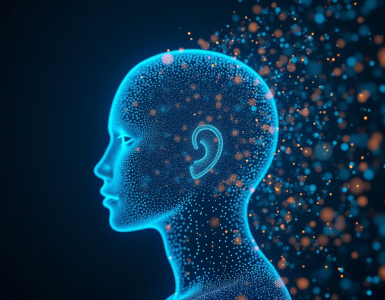In the rapidly evolving landscape of Natural Language Processing (NLP), Nvidia has unveiled a game-changing development that promises to revolutionize human-computer interaction. The tech giant has released a competitive Llama3-70b QA/RAG fine-tune model, marking a significant milestone in the realm of Retrieval-Augmented Generation (RAG) and conversational Question-Answering (QA) systems.
Introducing Llama3-ChatQA-1.5: A New Benchmark in AI Conversation
At the heart of this breakthrough is the Llama3-ChatQA-1.5 model, an impressive advancement built upon the foundation of its predecessor, ChatQA (1.0). This new iteration leverages the robust Llama-3 base model and incorporates an enhanced training recipe to deliver unprecedented performance.
Key Features and Improvements
- Enhanced Capabilities: The model boasts improved tabular and arithmetic computation abilities, thanks to the integration of large-scale conversational QA datasets.
- Dual Versions: Llama3-ChatQA-1.5 comes in two variants:
- Llama3-ChatQA-1.5-8B (8 billion parameters)
- Llama3-ChatQA-1.5-70B (70 billion parameters)
- Accessibility: Initially trained with Megatron-LM, both versions have been converted to the Hugging Face format, ensuring wider accessibility and ease of use for developers and researchers.
The Evolution from ChatQA to Llama3-ChatQA-1.5
The development of Llama3-ChatQA-1.5 builds upon the success of ChatQA, a family of conversational QA models that have demonstrated performance levels comparable to GPT-4. ChatQA introduced a novel two-stage instruction fine-tuning strategy, significantly enhancing zero-shot conversational QA outcomes with Large Language Models (LLMs).
Innovative Retrieval-Augmented Generation
A key feature of ChatQA is its utilization of a dense retriever, optimized on a multi-turn QA dataset. This approach enables efficient handling of retrieval-augmented generation, substantially reducing implementation costs while achieving results on par with state-of-the-art query rewriting techniques.
The Llama 3 Revolution: Setting New Standards
The transition to Llama 3 models represents a pivotal moment in AI development. These models, with their 8B and 70B parameter versions, showcase exceptional performance across various industrial benchmarks and boast enhanced reasoning capabilities.
Future Directions for Llama 3
The Llama team has outlined ambitious goals for the future:
- Expanding into multilingual and multimodal domains
- Enhancing contextual understanding
- Continuously improving core LLM functions such as code generation and reasoning
The overarching aim is to provide the most advanced and accessible open-source models, fostering innovation and collaboration within the AI community.
Llama 3 vs. Llama 2: A Quantum Leap in Performance
Llama 3’s output significantly surpasses that of its predecessor, Llama 2, establishing new benchmarks for LLMs at the 8B and 70B parameter scales. Notable improvements in pre- and post-training protocols have led to:
- Enhanced response diversity
- Improved model alignment
- Strengthened critical competencies, including reasoning and instruction following
The Impact of Llama3-ChatQA-1.5 on NLP and AI
The introduction of Llama3-ChatQA-1.5 represents the cutting edge of NLP advancements and sets new standards for future work on open-source AI models. This development ushers in a new era of conversational QA and retrieval-augmented generation, with far-reaching implications for various sectors.
Potential Applications and Benefits
- Customer Service: Enhanced chatbots capable of handling complex queries and providing more accurate, context-aware responses.
- Education: Intelligent tutoring systems that can engage in meaningful dialogue and provide personalized learning experiences.
- Healthcare: Advanced medical assistants capable of interpreting complex medical data and assisting in diagnosis.
- Research and Development: Accelerated information retrieval and analysis in scientific and academic fields.
- Content Creation: Sophisticated AI writing assistants that can generate high-quality, contextually relevant content.
The Road Ahead: Responsible AI and Innovation
As the Llama project continues to evolve, it is expected to drive responsible AI adoption across various domains and catalyze innovation. The open-source nature of these models encourages collaboration and transparency, potentially leading to:
- Faster advancements in AI technology
- More ethical and unbiased AI systems
- Increased accessibility to cutting-edge AI tools for researchers and developers worldwide
Conclusion: A New Chapter in AI Conversation
Nvidia’s release of the Llama3-70B QA/RAG fine-tune model, particularly the Llama3-ChatQA-1.5, marks a significant leap forward in the field of conversational AI. By pushing the boundaries of what’s possible in natural language processing, this development opens up new horizons for human-computer interaction.
As we stand on the brink of this new era in AI technology, the potential applications and implications are vast. From revolutionizing customer service to advancing scientific research, the Llama3-ChatQA-1.5 model promises to be a catalyst for innovation across numerous industries.
The journey of AI development continues, with each breakthrough bringing us closer to a future where seamless, intelligent conversation between humans and machines is not just a possibility, but a reality. As researchers, developers, and businesses harness the power of these advanced models, we can anticipate a wave of transformative applications that will reshape our interaction with technology in the years to come.
Read more such articles from our Newsletter here.






Add comment